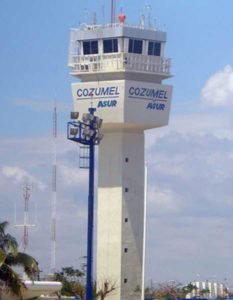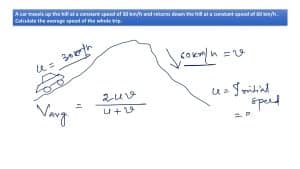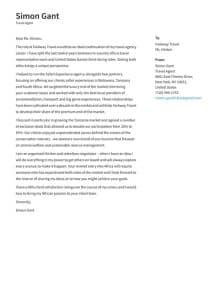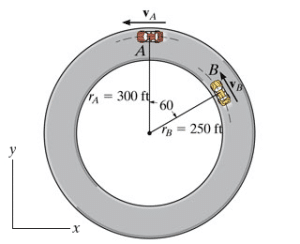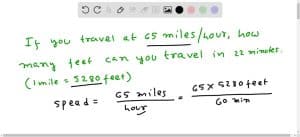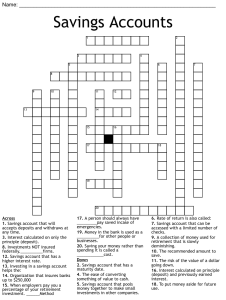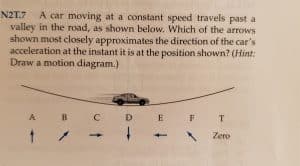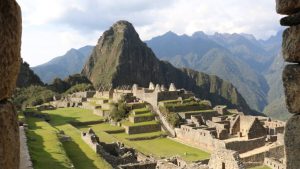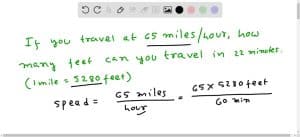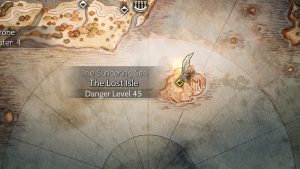Welcome to Hosteliest! In our latest article, we’re embarking on a historical journey, exploring how far Moses traveled from Egypt to Midian. Navigate this biblical route with us for intriguing insights and fascinating travel anecdotes along the way.
Just how far did Moses travel from Egypt to Midian? This question has puzzled many minds across centuries. To satiate your curiosity, we’re dishing out some interesting facts about this historical journey. So, stay with us and unravel the truth of this intriguing expedition.
Table of Contents
ToggleUnderstanding the Journey
Moses, a significant figure in various religions, is notably known for leading the Exodus of the Israelites out of Egypt and into Midian. However, the exact distance covered by Moses during this pivotal journey raises certain interesting inquiries.
So, How Far Did Moses Travel from Egypt to Midian?
A visit to this awe-inspiring trajectory could peg the distance between Egypt and Midian at almost 405 kilometers (or 250 miles). However, the journey undertaken by Moses was, understandably, not a straight line. The path he led was fraught with numerous detours, challenges, and wanderings through wilderness areas.
The Route
In tracing the route, the Bible points towards the path through the Sinai Peninsula. This would have resulted in a much more extended journey, potentially as long as 800 kilometers (or 500 miles).
The Timeframe
Given the historical context and the conditions of the period, the journey would not have been completed in a matter of days. It likely took quite a few weeks or even months.
The Significance of the Journey
Now that you know about ‘how far did Moses travel from Egypt to Midian’, it’s time to ponder upon the significance of this journey.
This journey wasn’t just about measuring distances. It highlighted the profound faith, courage, and leadership of Moses. His journey from Egypt to Midian is a tale of freedom, hope, and unwavering belief. It symbolically represents the path out of oppression into a land of promise.
Traveling Through History
While physical travel between places defines our contemporary understanding of travel, the journey of Moses reminds us that travel often holds deeper meanings. This trek was about leading people from slavery to a land of freedom, against all odds.
The Exodus Route Today
Today, the supposed route of Moses from Egypt to Midian might extend your itinerary significantly, but for the history aficionados and spiritual seekers, it could be an illuminating journey through time and landscapes. Think vast desert expanses, the azure waters of the Red Sea, and rugged mountains, all while you soak in the echoes of a distant yet powerful past.
Conclusion: The Long and Winding Road
In essence, the query, ‘how far did Moses travel from Egypt to Midian’, is more than just numerical distance. The challenges faced and the journey’s historical, spiritual weight make it a compelling narrative that continues to resonate through centuries.
So whether you’re a keen historian, curious traveler, or someone fascinated by these ancient stories of humanity, the journey of Moses offers valuable lessons and insights into human resilience and determination.
And who knows? Perhaps one day, you’ll find yourself retracing the steps of this great historical figure, on a journey that transcends mere geography and transports you back through the annals of time.
Tracing Moses’ Journey: The Distance Travelled from Egypt to Midian – A Historic Exploration for the Adventurous Traveller
For the adventurous traveller, tracing the biblical journey of Moses from Egypt to Midian can be an extraordinary pursuit. The experience brings you closer to cherished historical narratives while allowing you to explore picturesque landscapes and rich cultures.
The Journey
Moses, a central character in various religious texts, embarked on an arduous journey from Egypt to Midian, which lay across harsh terrains. While the exact route is not carved out on the world map, estimated beginnings, stops and ends can be identified, making for a thrilling exploration of this historic pilgrimage.
Egypt – The starting point
Your journey begins where Moses’ story started, in Egypt. Its ancient landmarks and structures like the Pyramids of Giza or the Sphinx provide a vibrant backdrop as you delve into Moses’ past. For accommodation in Egypt, hotels like the Marriott Mena House, located near the pyramids, or the iconic Sofitel Cairo Nile El Gezirah, can immerse you in Egyptian history and luxury.
Sinai Peninsula – Traversing the desert
As Moses headed towards the promised land, he crossed the Sinai Peninsula, a vast, arid region that sprawls between Egypt and the eastern edge of the Mediterranean Sea. Here, travellers can explore Bedouin culture, climb Mount Sinai, or simply marvel at the stark beauty of the desert. The Hilton Sharm Waterfalls Resort or Bedouin Moon Hotel offer comfortable accommodation options with great views of the surrounding landscape.
Midian – The destination
The last leg of the journey takes you to Midian, generally believed to be in northwest Saudi Arabia. Although Midian itself doesn’t exist anymore, you can sense the historical presence by visiting the area around the city of Tabuk. It’s a place of antiquities and archaeological sites like the Al Bad’ archaeological site. Hotels like the Hilton Garden Inn Tabuk or Swissotel Al Khobar offer comfortable stays with convenient access to local sites.
Remember, retracing Moses’ journey is not just about treading the same path, but also engaging with the cultures, understanding historical significance and appreciating the natural beauty along the way. This trip is an excellent opportunity to witness history, faith, and culture intersecting while enhancing your travel experiences.
Understanding the Historical Context: Moses’ Journey from Egypt to Midian
The story of Moses, a pivotal figure in Judaism, Christianity, and Islam, is one filled with epic travels and powerful revelations. According to scriptures, one of these journeys was from Egypt to Midian. To fully appreciate this journey, it is important to understand its historical context. Scholars estimate that the journey would have been around 285-300 miles and would have taken roughly three weeks on foot. This arduous escapade took place in a region mostly characterized by harsh deserts, making it a formidable feat for anyone, especially during ancient times. The journey from Egypt to Midian is symbolic of Moses’ transition from an Egyptian prince to a humble shepherd, a pivotal part of his spiritual journey.
Accommodation and Lifestyle During Moses’ Time
It’s difficult for us to imagine living in the modern age what accommodation and lifestyle would have been like during Moses’ time. There were no hotels or forms of public lodging. Travelers had to rely on their own resources, often sleeping under the stars, in tents or relying on the hospitality of strangers. In terms of food and necessities, they had to either carry their supplies with them, hunt, or trade for what they needed. While it might seem crude and difficult to us today, this was the reality of travel and lifestyle during Moses’ time, which makes his journey all the more impressive.
The Legacy of Moses’ Journey and Its Influence on Modern Travel
While we can’t exactly compare ancient and modern travel, there’s no denying that Moses’ journey has had a significant impact on the world, particularly in regards to faith-based travel or pilgrimage. The story has inspired countless pilgrimages to religious sites associated with Moses, such as Mount Sinai. Today, these destinations offer a range of accommodations, from budget hotels to luxury resorts, to cater to the diverse needs of these pilgrims. Moses’ journey also raises intriguing questions about the nature of travel and the transformation it imparts, a concept that remains vital in today’s travel experiences.
Frequently Asked Questions (FAQ)
“What is the estimated mileage that Moses would have covered when traveling from Egypt to Midian?”
The journey that Moses undertook from Egypt to Midian is one of biblical proportions and not clearly documented with specific distances. However, based on the general geography, it is estimated that the distance between Egypt and Midian, which is thought to be in present-day northwestern Saudi Arabia, could range from 200 to 500 miles depending on the exact locations and route taken.
Moses would have likely traveled through arduous desert terrain, and possibly even crossed the Red Sea. He would have faced challenges such as harsh weather conditions, lack of food and water, and the physical toll of walking long distances each day.
It is also important to note that due to the nomadic lifestyle during that time period, the journey would certainly be a difficult one, likely traveled by foot or camel. The direct route, which was likely not the one taken, could be around 200 miles. Considering diversions, detours, and possible followings of trade routes, this distance could easily double or triple.
Again, these are rough estimates as the exact mileage that Moses would have covered in his travel from Egypt to Midian is lost to history and remains a topic of much debate and speculation among scholars.
“Are there any modern hotels or accommodation options situated along the historical route Moses is believed to have traveled from Egypt to Midian?”
Yes, there are a good number of modern accommodation options along the historical route believed to have been traveled by Moses from Egypt to Midian. In Egypt, cities like Cairo and Luxor host several highly rated hotels including the Marriott Mena House and Winter Palace Luxor.
As you venture towards the Sinai Peninsula, the coastal city of Dahab offers resorts like the Le Meridien Dahab Resort and Tropitel Dahab Oasis. Near Mount Sinai, considered a key location in Moses’s journey, you’ll find the St. Catherine’s Plaza offering basic but comfortable accommodation.
Crossing the Red Sea into Saudi Arabia, the province of Tabuk, believed by some to be the site of biblical Midian, has modern hotels such as the Hilton Garden Inn Tabuk and Swissotel Al Khobar.
Keep in mind, however, that the exact route Moses took, and the locations he visited are subjects of debate among historians and archaeologists. As such, the aforementioned places offer a general idea based on popular interpretations. It’s always a good idea to engage with local guides or tour companies that specialize in religious history tours to get the most out of your visit.
“What top travel destinations and significant landmarks are located today on the route Moses supposedly followed from Egypt to Midian?”
The supposed path that Moses took from Egypt to Midian covers a rich tapestry of history, culture, and natural beauty in present-day Egypt and Saudi Arabia.
Starting in Egypt, key landmarks along this route include the Pyramids of Giza, the Sphinx, and the Egyptian Museum in Cairo. There are various luxury accommodations available in Cairo, one of the most popular being The Mena House Hotel, offering views of the stunning pyramids.
Next up is the Sinai Peninsula, famous for its religious significance and Red Sea resorts like Sharm El Sheikh, a great place for diving, snorkeling, or simply relaxing by the sea. On the southern tip of Sinai is St. Catherine’s Monastery, situated at the foot of Mt. Sinai where Moses is believed to have received the Ten Commandments. Here, travellers can stay at the Fox Camp – a tranquil retreat offering basic accommodations in an authentic Bedouin village.
Continuing onwards, we enter Saudi Arabia. The city of Nabatean is along the route, with its famed rock formations and ancient tombs. Accommodations in the form of local homestays and guesthouses offer a unique Middle Eastern hospitality experience.
Further south, we come to the city of Midian (also known as Al Bad’) located on the Gulf of Aqaba. It’s said that this is where Moses lived for 10 years after fleeing Egypt. Today, visitors can explore its historical ruins including the famous ‘Well of Moses’. The nearby coastal city of Tabuk provides more modern accommodation options, such as the Hilton Garden Inn Tabuk.
Remember, when planning to visit these locations, ensure to properly research visa requirements and safety considerations. The route traverses several countries and regions, each with its own complex set of travel regulations and advisories.
In conclusion, the journey of Moses from Egypt to Midian marks an epic trek in biblical history. He traveled, presumably on foot, approximately 285 miles through treacherous and arduous landscapes. This distance is similar to a road trip from Los Angeles to Las Vegas, requiring considerable resilience and determination. Such journeys are a testament to the human spirit’s capacity for endurance and perseverance.
While most travelers today would tackle a similar distance in the comfort of modern transportation and with the convenience of hotels, it is fascinating to imagine how this journey might have looked thousands of years ago. With this context, it certainly gives us increased appreciation for the conveniences of modern travel. But perhaps most importantly, it underscores the universal allure of exploration and discovery – whether that means crossing deserts or simply stepping out our front door.
Travel, in its many forms, continues to inspire and challenge us. Whether we’re reliving the trials of historical figures like Moses or embarking on our own adventures, each journey offers invaluable experiences and insights.
Remember, no matter how difficult the path, the destination often proves worth the effort. Safe travels, everyone!



